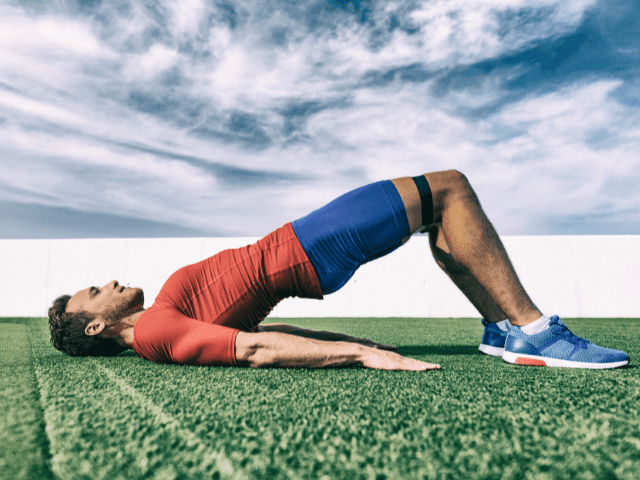Hyperextensions (How To, Muscles Worked, Benefits)
Hyperextensions are a lower-body exercise that is used primarily as an accessory movement to help lifters gain strength and hypertrophy for their hamstrings, glute muscles, and lower back.
In this article, I am going to explain how to properly perform hyperextensions including some coaching points, muscles worked, and give some alternatives.
How To Do Hyperextensions
Equipment Needed
- Glute-Ham Raise Machine
Step-by-Step Instruction
- First, you are going to want to get the glute-ham raise machine adjusted to the correct length.
- I recommend adjusting the machine so that your hip crease is at the end of the padding of the machine.
- Locking your feet in, facing the ground, keep a neutral spine by focusing your eyes on the floor below.
- Take in a deep breath, brace the abdomen, and keep your hands on the handles until you are ready to perform the eccentric movement.
- Once ready, take your hands off the handles, extend your body, keep your arms at your side, and control your body down until your torso is about perpendicular to the floor.
- Pause for 1 second in the bottom of the position to maintain stiffness in the muscles before coming back up.
- After 1 second of the isometric hold, pull yourself back parallel to the floor, engaging the glutes, hamstrings, and low back, while also keeping stiffness in the abdomen and upper back.
Coaching Points
Hyperextensions are surprisingly easy to mess up. One of the easiest ways to make a mistake is going down too fast and “whipping” yourself back to the starting position. As with any exercise, the setup, initial breath before eccentric movement, maintaining control, pausing, and breathing out during concentric contraction are important.
Hyperextensions are a great movement to use for accessory work after the main work is done for the session, warm-ups, and rehabilitation.
It is important for the lifter to maintain a neutral spine, maintaining tension in the abdomen and upper back. Remember to breathe in and hold the breath during eccentric (lowering your body) and breathe out as you perform the concentric movement (bringing your body back up).
Benefits of Hyperextensions
Many people only think of the abs when referring to the core, but the low back is an important part of the core.
Along with the glutes and hamstrings, hyperextensions work the erector spinae muscles, which are the muscles that run along the spine and are responsible for extending the back. By strengthening these muscles, hyperextensions can help improve performance in larger compound movements like Back Squats and Olympic lifts.
Strengthening the lower back and core muscles through hyperextensions can also help prevent injuries and improve overall physical performance for sports or even just daily activities.
How Many Reps?
Hyperextensions are a supplemental strength exercise. Recommended rep ranges are 3 to 4 sets of 8 to 12 reps.
Muscles Worked
- Hamstrings
- Glute Muscles
- Lower Back
Hyperextension Alternatives
If you’re unable to do Hyperextensions because you don’t have a Glute Ham Machine (or whatever reason), here are a few Hyperextension alternatives you might be able to try out.
Want even more options? Here are 11 of my favorite alternatives for Hyperextensions.
Body Weight Single-Leg Romanian Deadlift
A bodyweight single-leg RDL is a great exercise for warming up the hamstrings, glutes, and lower back.
Creating tension in the arch of the foot, slightly bending one knee, and lifting the other leg off the ground, the lifter focuses on hinging at the waste, engaging the glutes and hamstrings preparing the body for the main lower body movements of the day.
Banded Good Mornings
A Banded Good Morning is an exercise where the lifter puts a band around their neck, resting on the traps (remember don’t crane the neck upward), and performs the hip hinge pattern which would be identical to an RDL but also similar to the hamstring stretch experienced in a hyperextension.
This is beneficial for novice lifters looking for a different form of resistance and also serves as a great warm-up movement for the more experienced lifter getting ready for squats and deadlifts.
Glute Bridge

The Glute Bridge is an exercise where the athlete lays on their back, pulls their heels in, drives their elbows into the ground, and focuses on engaging the glutes to bridge the hips up.
This is a great movement to warm up the glutes and lower back for the main lower body movements for the day.
More Links and Info
Looking for more great Lower Body Lifts? Head over to the exercise library where there is a great collection of exercises to help you accomplish your training goals. All for free.

